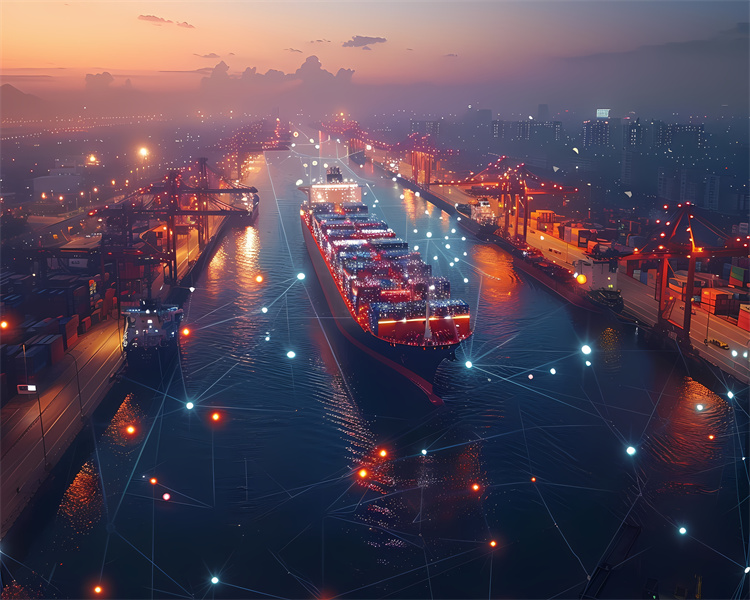Decades on, ‘supply chain visibility’ remains a work in progress

Supply chain visibility plays a crucial role in today's global trade environment. Companies strive to track inventory as it moves through the supply chain. This visibility helps businesses identify bottlenecks and inefficiencies. Statistics show that only 6% of businesses achieve full visibility. Yet, 92% of global companies invest in improving this aspect. Two-thirds of business leaders emphasize the need for increased visibility.
Historical Overview of Supply Chain Visibility
Evolution Over the Decades
Early Developments
Supply chain visibility has always been a crucial aspect of trade. In the early days, businesses relied on manual processes to track goods. Paper records and verbal communication were the primary tools. This method was slow and prone to errors. Companies struggled to maintain accurate records. The lack of technology made real-time tracking impossible. Businesses faced challenges in managing inventory efficiently.
Technological Milestones
The introduction of technology marked a turning point. Barcodes and RFID tags revolutionized tracking. These innovations allowed for more precise monitoring of goods. Companies began to see the benefits of enhanced supply chain visibility. The internet further transformed the landscape. Real-time data became accessible, improving decision-making. Advanced software now collects data at every step. This development has made end-to-end visibility achievable. However, the journey is ongoing, with new technologies continually emerging.
Persistent Challenges
Data Silos
Despite technological advancements, data silos remain a significant hurdle. Many companies store information in isolated systems. This fragmentation hinders comprehensive supply chain visibility. Businesses struggle to integrate data across departments. The lack of a unified system creates blind spots. These gaps can lead to inefficiencies and missed opportunities. Overcoming data silos requires strategic planning and investment.
Lack of Standardization
Another challenge is the lack of standardization. Different companies use varied systems and protocols. This diversity complicates data sharing and collaboration. Without common standards, achieving true visibility is difficult. Businesses must navigate a complex web of incompatible systems. Efforts to standardize processes are underway. Collaboration among industry leaders is essential for progress.
Current Advancements in Supply Chain Visibility
Role of IoT, AI, and Machine Learning
The world of supply chain visibility is buzzing with new technologies. IoT, AI, and machine learning are leading the charge. These tools are transforming how companies track and manage their supply chains.
IoT Applications
IoT is like a magic wand for supply chain visibility. Sensors and devices collect real-time data from every corner of the supply chain. Companies can monitor inventory levels and track shipments with ease. IoT applications help businesses respond quickly to changes. Imagine knowing exactly where your shipment is at any moment. That's the power of IoT. It makes supply chain operations smoother and more efficient.
AI and Predictive Analytics
AI and predictive analytics take things up a notch. These technologies analyze vast amounts of data. They provide insights that help businesses make smarter decisions. AI can predict demand and optimize inventory levels. Companies can avoid stockouts and overstock situations. Predictive analytics also spot trends and patterns. Businesses can plan better and improve their supply chain visibility. AI and predictive analytics make supply chains more agile and responsive.
Benefits of Improved Supply Chain Visibility
Supply chain visibility offers a treasure trove of benefits for businesses. Companies can gain insights into daily operations and make informed decisions. This visibility helps reduce costs and avoid reputational damage. Let's dive into some specific advantages.
Better Inventory Control
Inventory control becomes a breeze with improved supply chain visibility. Real-time tracking allows businesses to monitor inventory levels accurately. Companies can see where products are at any given moment. This insight helps prevent stockouts and overstock situations. Businesses can maintain optimal inventory levels and reduce holding costs.
Real-time Tracking
Real-time tracking is like having eyes everywhere in the supply chain. Companies can follow shipments from start to finish. This capability ensures that goods arrive on time. Businesses can quickly address any delays or issues. Real-time tracking boosts efficiency and reliability.
Demand Forecasting
Demand forecasting becomes more accurate with enhanced visibility. Companies can analyze trends and patterns in customer behavior. This analysis helps predict future demand with precision. Businesses can adjust production and inventory accordingly. Demand forecasting reduces waste and improves order fulfillment.
Enhanced Customer Satisfaction
Customer satisfaction skyrockets with better supply chain visibility. Transparency and trust become the foundation of customer relationships. Faster delivery times delight customers and keep them coming back.
Transparency and Trust
Transparency builds trust between businesses and customers. Companies can share shipment status updates with ease. Customers appreciate knowing where their orders are. This openness fosters loyalty and confidence in the brand.
Faster Delivery Times
Faster delivery times are a game-changer in today's fast-paced world. Businesses can streamline operations with improved visibility. Companies can identify bottlenecks and eliminate inefficiencies. Faster deliveries lead to happier customers and repeat business.
Future Trends and Potential Solutions

Emerging Technologies
Blockchain
Blockchain technology is making waves in supply chain management. Companies use blockchain to ensure transparency and traceability. Each transaction gets recorded in a secure, immutable ledger. This process builds trust among all parties involved. Businesses can verify the authenticity of products at every stage. Blockchain reduces fraud and errors, enhancing supply chain visibility. The technology also streamlines processes by eliminating intermediaries. Companies save time and resources, boosting efficiency.
Advanced Analytics
Advanced analytics is another game-changer. Businesses harness data to gain valuable insights. Predictive analytics helps companies forecast demand accurately. This capability prevents stockouts and overstock situations. Companies optimize inventory levels, reducing costs. Advanced analytics also identifies trends and patterns. Businesses can make informed decisions and improve operations. The technology enhances agility and responsiveness in supply chains.
Strategies for Overcoming Challenges
Collaboration and Partnerships
Collaboration plays a vital role in overcoming supply chain challenges. Companies form partnerships to share resources and expertise. These alliances strengthen supply chain networks. Businesses work together to standardize processes and systems. Collaboration fosters innovation and problem-solving. Companies can tackle complex issues more effectively. Partnerships also enhance connectivity and reliability.
Investment in Technology
Investment in technology is crucial for supply chain success. Companies prioritize technologies that align with strategic objectives. IoT sensors provide real-time tracking and monitoring. AI and machine learning optimize planning and decision-making. Businesses invest in these technologies to boost efficiency. The right tech stack enhances supply chain resilience. Companies become better equipped to handle disruptions. Investment in technology drives growth and competitiveness.
Supply chain visibility remains a dynamic field with ongoing challenges and opportunities. Companies can leverage technologies like IoT and AI to enhance visibility, leading to better decision-making and resilience.
See Also
The Power of Visibility in Enhancing Supply Chain Efficiency
Consistent Transparency: Essential for Supply Chain Excellence
Driving Growth: How Supply Chain Visibility Impacts Global E-commerce
Seamless Success: Ensuring Supply Chain Continuity
Revolutionizing Supply Chain Management with Cloud-Based Innovations
